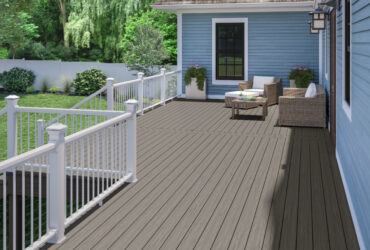Research Prospect Of Nano Reinforced Wood Plastic Composites
The combination of traditional WPC and nanomaterials can make it more comprehensive in function and wider in application fields, thereby creating more economic benefits for the society. In the future, systematic research can be carried out from the following aspects:

(1)At present, the use of nano-materials to enhance WPC has abundant research results at home and abroad, but the addition of many inorganic nano-materials to WPC is limited.When the amount added is too much, it is easy to agglomerate and lose its excellent nano-characteristics, and it is easy to weaken the reinforcing effect of nano-materials in WPC. In order to increase the amount of nanomaterials added, the compatibility between nanoparticles and polymers can be improved from the perspective of functional modification of inorganic nanoparticles.
(2)A variety of inorganic nanomaterials can simultaneously improve the mechanical properties, flame retardancy, and UV aging resistance of WPC. However, the research mechanism of nano-additive compounding to enhance WPC is still unclear, and further optimization and regulation are needed.

(3)The scale-up production of WPC enhanced with nanomaterials has not been resolved.In terms of industrial production, due to the high cost of nano-additives and the difficulty in construction, their large-scale application is limited.In the future, we can try to use more cost-effective precursors and adopt simpler synthesis methods to improve the production process, thereby further reducing the cost of nanomaterial-enhanced WPC and promoting the industrialization of nano-enhanced WPC.
(4)The research on organic nano-enhanced WPC needs to be deepened. It is necessary to further reveal the relationship between the performance and structure of organic nanomaterials, and lay a foundation for the research and development of high-performance, multifunctional organic nanomaterials to enhance WPC through the analysis of the internal mechanism.






